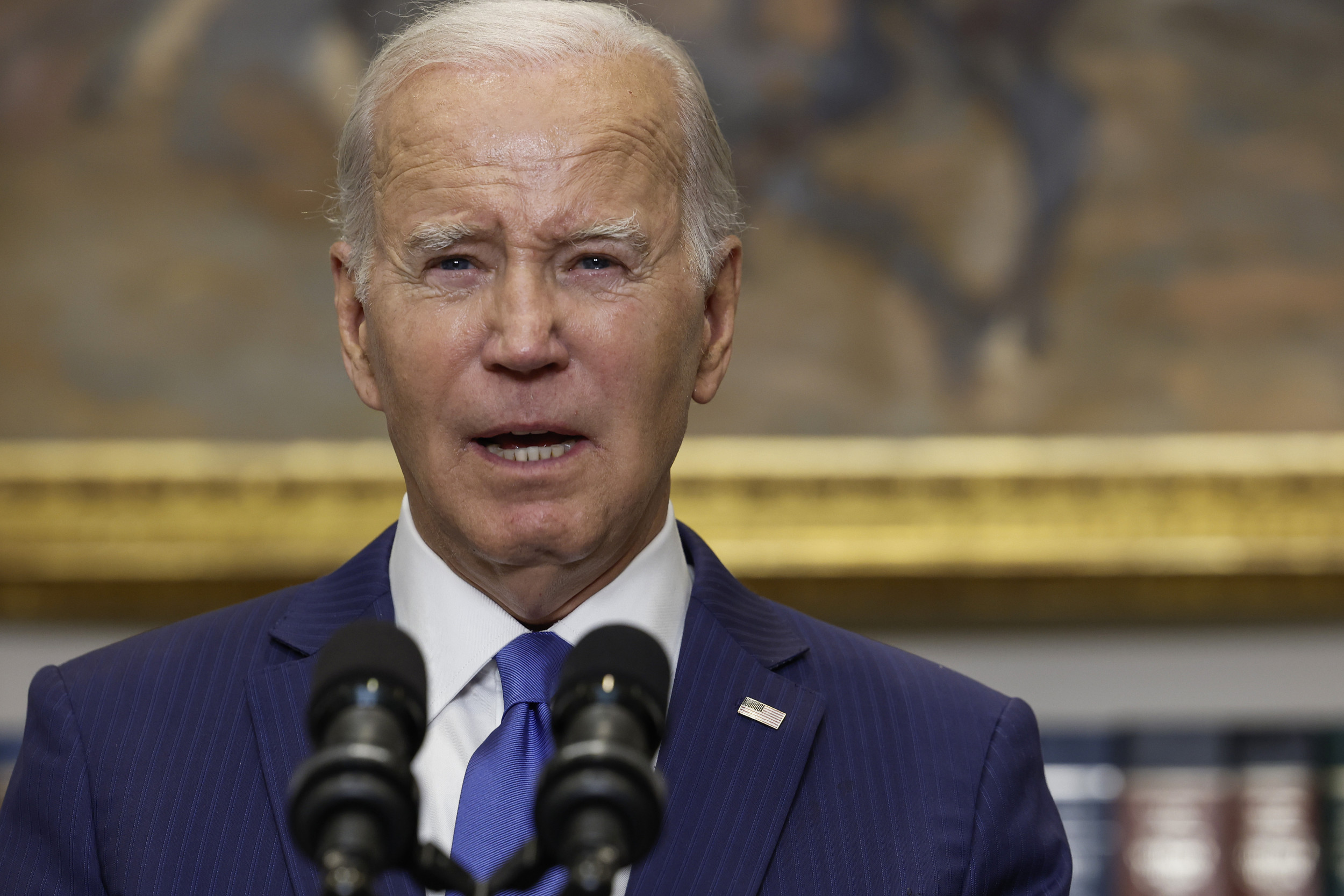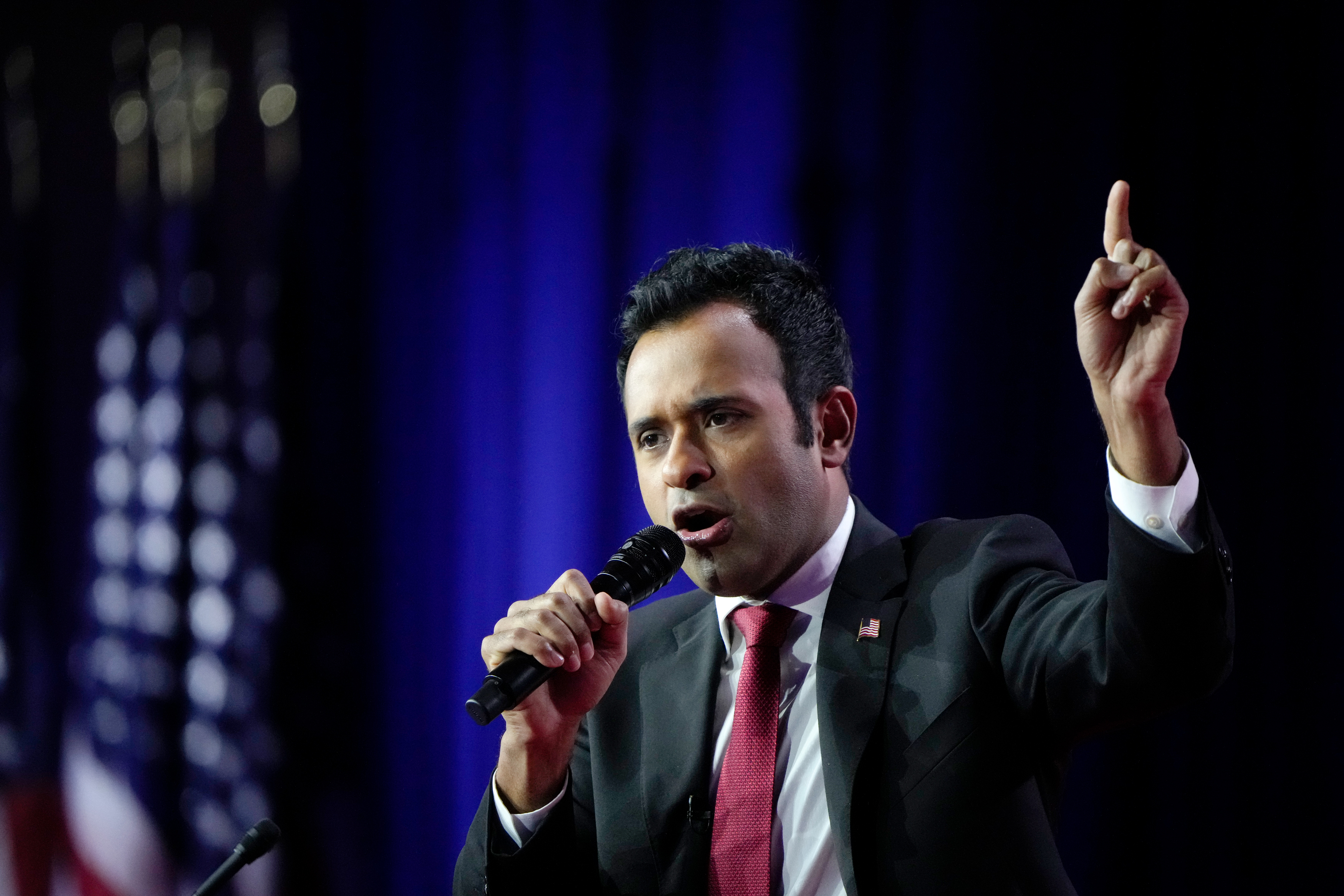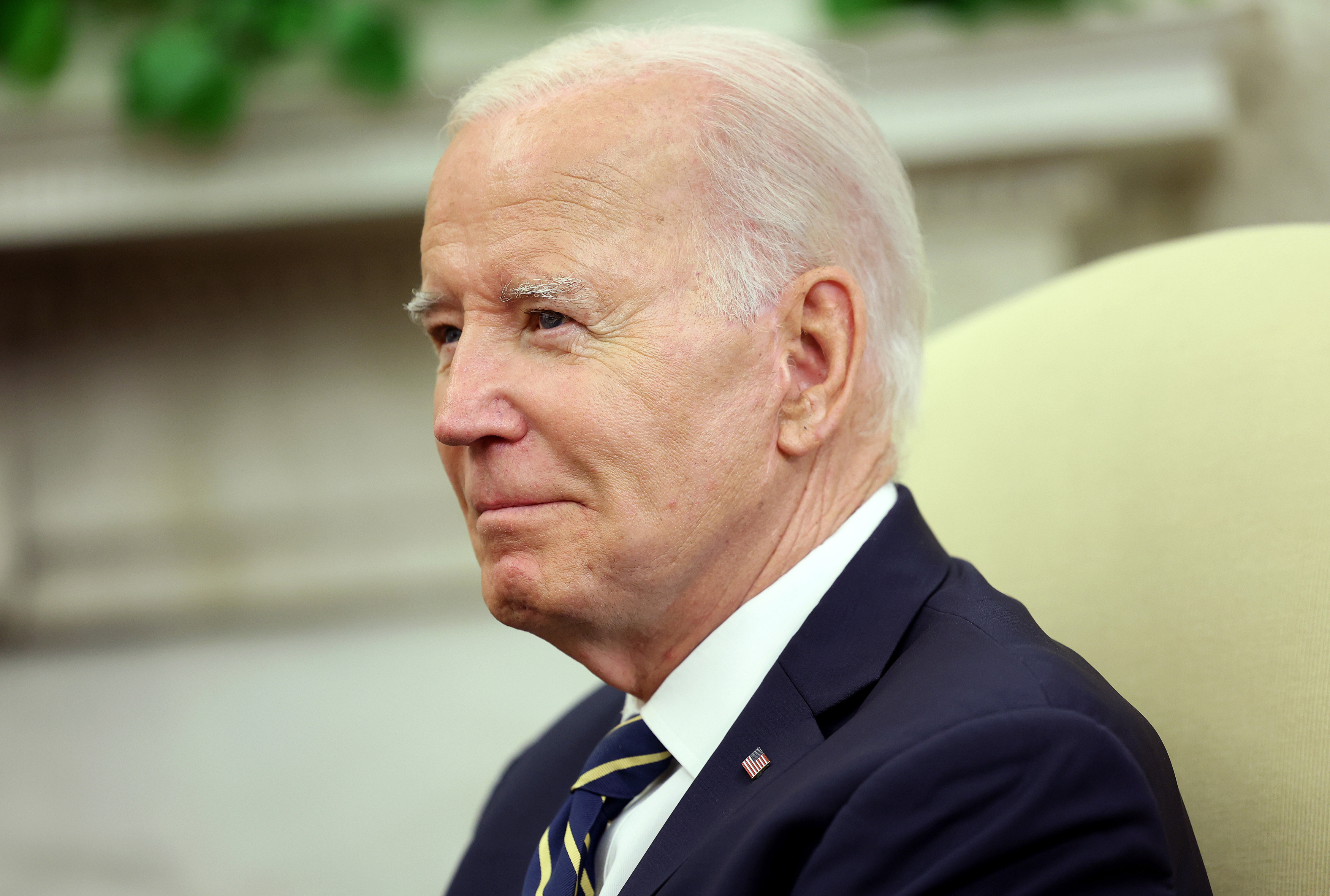As President Joe Biden once again warned his Russian counterpart Vladimir Putin against the use of nuclear weapons in Ukraine, the U.S. leader's own arsenal is actively attempting to deter the Kremlin from pressing the button, either against the neighboring Eastern European nation, or the United States itself.
And if that doesn't work, U.S. Strategic Command, commonly known as STRATCOM, is prepared to do what would otherwise be unthinkable.
"For more than 60 years, America's Nuclear Triad has served as the backbone of America's national security," STRATCOM Public Affairs Chief Captain Ronald Flanders told Newsweek. "Forces operating at sea, on land, and in the air are ready 24 hours a day, 365 days a year, deterring our nation's adversaries from attacking the United States or our allies."
"Should deterrence fail, STRATCOM stands ready to deliver a decisive response," the spokesperson added. "Each leg of the Triad provides unique and complementary attributes which provide responsiveness, flexibility and survivability to ensure that no adversary believes it could successfully launch a strategic attack against the United States."
In addition to holding up to 90% of the global nuclear warhead stockpile, Washington and Moscow also command the world's most sophisticated nuclear triads, which consist of land, air and sea delivery systems built to ensure both maximum lethality and survivability.
But the U.S. is believed to be alone among the nine nuclear nations in maintaining a constant forward-deployed strategic capability in the form of a longstanding "nuclear sharing" policy through which nuclear weapons are stationed among several NATO allies, including non-nuclear states Belgium, Germany, Italy, the Netherlands and Turkey.
The fact that these bombs, nor any other nuclear weapons, have seen combat use since the final days of World War II, however, is something U.S. officials credit to their deterrence measures now increasingly being put on display as a direct message to Moscow.
Newsweek spoke with former personnel with experience operating some of the most visible and invisible tips of the three-pronged nuclear trident, both of which have been involved in open shows of might as the U.S. and Russia navigate their most tense nuclear moments since the Cuban Missile Crisis some six decades ago.

When Putin announced the onset of his war against Ukraine in February, one of the first military moves Biden made was to order patrols of NATO's eastern frontier by one of the oldest yet most potent assets in the U.S. arsenal: the B-52 Stratofortress strategic bomber.
This year marks the 70th anniversary of the first flight of the B-52, which is undergoing yet another update, giving the aircraft a brand new set of hardware as well as a new weapon, the Long Range Stand-off Weapon. A veteran of the Cold War, the B-52 is once again being used to test Russia's wits in Europe.
Captain David Prakash flew in B-52s for 10 of those 70 years before retiring in 2017. As Biden now seeks to issue unmistakable warnings to Putin over the potential use of even smaller, tactical nuclear weapons in Ukraine, Prakash said that the bomber is just the right tool for the job.
"That's the B-52's bread and butter," Prakash told Newsweek. "As an aircraft that doesn't have stealth, we kind of rely on its recognition as a strategic bomber. We want to make it as obvious as possible. We want it to be seen then. That's the value of the B-52 has always provided."
Prakash, who now focuses on AI in healthcare, early-stage tech investments and developing a future weapon system for Northrop Grumman, contrasted the B-52's nature with that of the land and sea legs of the nuclear triad, platforms he said are "rarely ever seen." And once they are, he pointed out, it's already "the point of no return," as their warheads would be racing to hit their targets just 30 minutes away.
"The B-52 is the only tool in the triad that allows you to forward-deploy the weapons in a visible fashion, and still have the command-and-control authority to recall it," Prakash said. "Walk softly and carry a big stick, that's what the B-52 represents, something that can be seen and heard and send a message short of actually having to launch a weapon."
Sometimes, Prakash said, just arming the aircraft without even taking flight can be enough to change the calculus of other nations, and, in his own experience, it has.
"When we lay out a fully loaded B-52 on a ramp in broad daylight, I've seen that change
adversarial actions," Prakash said, without specifying the particular scenario. "That's why we're in Guam, that's why we're in the Pacific. You load up a B-52 and make sure everyone can see it. Sometimes it doesn't even need to take off."
But there's also a downside to being so easy to see, and Prakash said there were certain states of nuclear tensions among rival states during his time in the air in which the Pentagon decided to keep the B-52 out of the skies even for nearby training exercises in order not to aggravate the situation. And in the context of a potentially dangerous cycle of escalation with another country such as Russia, he said the B-52's effect can be formidable for the pilot as well.
"This is no longer saber-rattling, when the B-52 comes out in a nuclear context," Prakash said. "You start thinking, 'I may have just started World War III, or maybe the enemy may think I've gone past the point of no return with my behavior.'"
On the other end of the visibility spectrum are the Pentagon's stealthiest strategic assets, whose very locations often remain a closely guarded secret.
Before retiring in 2020, Navy Admiral James G. Foggo III not only served in and commanded submarines, but held the positions of commander of United States Naval Forces Europe-Africa and Allied Joint Force Command Naples.
"Since the 1960s, the nuclear ballistic missile submarine (SSBN) arm of the nuclear triad
has been considered the most survivable of the three legs," Foggo told Newsweek. "The SSBN arm played a key role in the Cold War as it provided the U.S. a 'second
strike' capability, as, unlike land-based missiles and bombers, SSBN's could not be
surprised and destroyed in a first strike by an opponent."
So while the B-52's strength is its recognizable presence both on the runway and in the skies, the submarine's edge is its ability to navigate the world's seas relatively unseen. A submarine could be fully armed and prepared to launch and foes likely would not know until it's too late, giving the submarine a psychological effect of its own.
"The relative undetectability of U.S. SSBNs and their unobservable movement to readiness (unlike land-based weapons or bombers) allows the U.S. negotiating leverage, as would-be nuclear weapon users have no idea how rapid a U.S. counterstrike might be mounted against them," said Foggo, now dean of the Washington, D.C.-based Center for Maritime Strategy.
"The knowledge that simply the SSBNs are at sea may well serve to effectively deter an
adversary from taking any irreversible actions," he added.
Foggo credited this concept to the late political scientist Albert Wohlstetter, a pioneer of U.S. nuclear strategy during the Cold War. He said the idea "still has value today," specifically pointing out its relevancy given the current nuclear-fueled tensions with Russia.
"No matter what else happens, the U.S. SSBN force will destroy an opponent," Foggo added, "making the first use of nuclear weapons ineffective, as such use will always result in the destruction of the first use."

In addition to the two forward-deployed elements of the nuclear triad, there is the lone component that lies permanently in the U.S. homeland itself.
Cole Smith served as a nuclear missile operator from 2012 to 2017, working 24-hour shifts at a Minuteman III intercontinental ballistic missile (ICBM) silo that represents the land-launched leg of the nuclear triad. What's different about this force is the unmatched rapidity in which it can be activated.
"ICBMs have the fastest response time of the three legs of the nuclear triad," Smith, now a filmmaker, told Newsweek. "They also allow for a long-range attack option. This, compared to submarines which take time to maneuver into position but are more "survivable" in the event of a nuclear attack, and bombers, which also take time to maneuver into position, but have the benefit of being recalled, whereas once an ICBM is launched it cannot be recalled."
"Each leg of the triad plays a role the other cannot," Smith explained. "In this case, ICBMs provide fast, long-range attack options."
That being said, he was also skeptical that ICBMs, or any asset of the nuclear triad, would, in fact, be able to credibly deter Putin from using a tactical nuclear weapon in Ukraine. He broke with the official U.S. line on deterrence, as he sees the war in Ukraine as an example of how the nuclear arsenals of major powers is not enough to prevent conflicts from breaking out across the globe.
"Russia knows that using a nuclear weapon in Ukraine does not satisfy the requirements for nuclear retaliation on our part," Smith said. "Furthermore, if we were to respond to a nuclear attack from Putin with one of our own, we would only open the door to further retaliation from Russia and the potential for all-out nuclear war."
"With that in mind, our nuclear arsenal does little to deter Russia from using a tactical nuclear weapon," he explained. "We've been told for years that our nuclear arsenals make us safer and prevent war."
"The current conflict in Ukraine is exposing the flaw in deterrence theory," Smith added, "and revealing the truth that large nuclear arsenals do not make the world a safer place."
Among the reasons he said the nuclear threat has actually become more urgent over the past three decades, is that, for all their destructiveness, they are rarely discussed openly in the U.S. Rather, discussions about the real world of nuclear weapons outside of Pentagon halls is often reserved for scholars and private sector defense industry leaders who profit off of an unending stream of contracts, sometimes, as Smith pointed out, without any competition and even less mainstream press coverage.
As such, he argued that "this freedom to operate without public scrutiny actually reduces the deterrent value of the ICBM force rather than strengthens it" and "we see this in recent events."
"When North Korea, Russia, or Iran push the boundary with their nuclear programs," Smith said, "U.S. admonishments carry little weight and do not change their behavior, because these countries know that we are quietly strengthening our nuclear force just as we ask them to reduce theirs."
"The best way to encourage non-proliferation while simultaneously increasing the deterrent value of the force already deployed is to start talking about these weapons again," he added.








